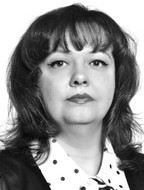Musical-rhythmic education aspects of academic gymnastics course
Фотографии:
ˑ:
PhD, Associate Professor J.V. Korichko1
PhD, Associate Professor A.R. Galeev1
1Nizhnevartovsk State University, Nizhnevartovsk
The study analyses the musical-rhythmic education aspects of an academic gymnastics course for students majoring in sporting and non-sporting disciplines; and outlines the key factors of influence on the vocational musical-rhythmic culture building in future physical education specialists by the relevant musical-rhythmic education tools. The study summarizes the outcomes of the education process monitoring and academic progress rating in the musical-rhythmic culture building process. The authors come to conclusion that the academic musical-rhythmic education course for the students majoring in sporting and non-sporting disciplines helps develop special competencies; accumulate valuable musical and motor experience; master motor skills of different difficulty levels; and develop a range of the overall, vocational and applied motor skills and abilities. The academic musical-rhythmic education course and the relevant tools, as we found, help (1) expand the range of the vocational competences and competitiveness of the future education specialists; (2) equip them with a multisided musical-rhythmic motor experience; and (3) develop their creativity by the academic class and off-class physical education curricula applicable by different education establishments.
Keywords: musical-rhythmic culture, vocational applied skills, academic physical and aesthetic culture, musical-rhythmic training.
References
- Andryushchenko L.B. Muzykalnaya ritmika v protsesse fizicheskogo vospitaniya studentov vuza [Music rhythmic program in university physical education process]. Teoriya i praktika fizicheskoy kultury, 2004, no. 5, pp. 12-14.
- Galeev A.R. Sotsialnye tantsy kak netraditsionnaya forma zanyatiy fizicheskoy kulturoy v vuze [Social dance as unconventional form of academic physical education]. Mater. VI Vseros. nauch.-prakt. konf s mezhdunar. uchastiem «Perspektivnye napravleniya v oblasti fizicheskoy kultury, sporta i turizma» [VI Rus. res.-pract. conf. with Intern. participation "Perspective directions in physical culture, sports and tourism"]. 2016, pp. 104-106.
- Korichko J.V. Metodika primeneniya ritmicheskoy gimnastiki na urokakh fizicheskoy kultury v 5-7-kh klassakh. Dis. kand. ped. nauk [Rhythmic gymnastics application methods at physical training lessons in grades 5-7. PhD diss.]. Omsk, 2000, 215 p.
- Menkhin Y.V. Ozdorovitelnaya gimnastika: teoriya i metodika [Recreational gymnastics: theory and technique]. Rostov-on/D: Feniks publ., 2002, 384 p.
- Pshenichnikova G.N., Korichko J.V. Aerobika v shkole. Ucheb. posobie [Aerobics at school. Study guide]. Omsk, 2009, 256 p.
- Roters T.T. Muzykalno-ritmicheskoe vospitanie i khudozhestvennaya gimnastika [Musical-rhythmic education and calisthenics]. Moscow: Prosveshchenie publ., 1989,175 p.
- Firileva Zh.E., Saykina E.G.. Sa-Fi-Danse. Tantsevalno-igrovaya gimnastika dlya detey (FGOS) [Dance and games-based gymnastics for children (FSES)]. St. Petersburg: Detstvo-Press publ., 2016, 352 p.



